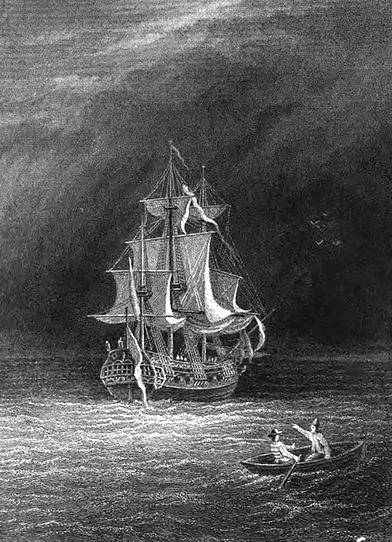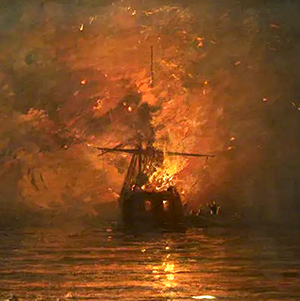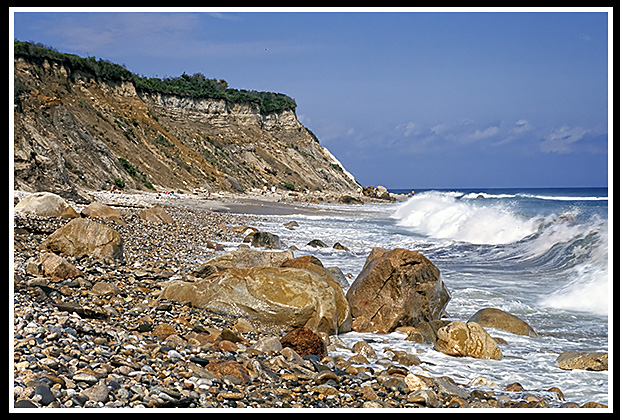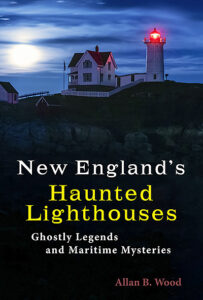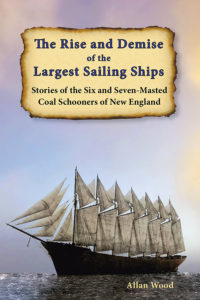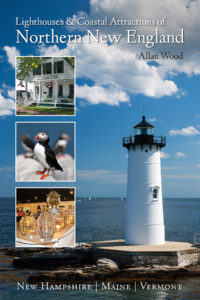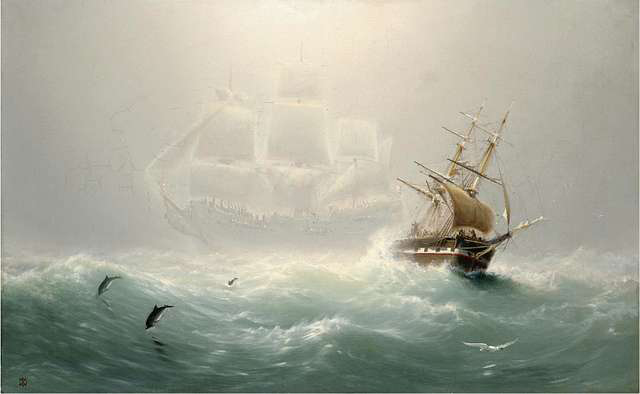
The Flying Dutchman by artist Charles Temple Dix, c. 1860, courtesy National Gallery of Art, Washington.
The Palatine Ghost Ship, Also Known as the Flying Dutchman, of Block Island in Rhode Island
Dangerous sandy shoals and rocky ledges surround Block Island. Dozens of ships would perish before the lighthouse authorities decided to build two lighthouses, Block Island North Light in 1829 and Block Island Southeast Light in 1875. Before the lighthouses were built, one of the most famous shipwrecks involved the ship Palatine, which became one of America’s renowned phantom ships. The story bears a resemblance to the world-renowned tale of the ghost ship Flying Dutchman, where the vessel is observed as being in flames or translucent from a distance and then disappears.
Today, the Palatine ship of written folklore is based on the wreck of Princess Augusta. In 1738, she was a Dutch immigrant ship transporting 240 immigrants from Rotterdam, Netherlands, to the English colonies in Pennsylvania and Virginia, where many of their compatriots had previously settled in search of a better life. The passengers were from the Palatine region of southwest Germany, so the ship was described as the “Palatine ship.”
After sailing for weeks across the Atlantic through many storms and running low on rations, tempers were high as the ship’s water supply became contaminated. About 200 passengers and half of the fourteen-man crew died of disease, including the captain, while the survivors were starving and in poor health from constant exposure to the storms. Most of these passengers were impoverished immigrants with limited financial resources. When First Mate Andrew Brook took over, food supplies were dwindling, and he started charging passengers for their share of food rations. Some starved when they ran out of money or items to trade, and their bodies were thrown overboard. Meanwhile, the stormy seas pushed the ship off course, causing it to head northwest.
The Princess Augusta continued to encounter severe storms off the coast of Rhode Island. The ship was constantly being pounded by waves crashing over its deck. Andrew Brook tried to steer the ship between Block Island and Long Island Sound, but a blinding snowstorm with gale-force winds caused the vessel to run aground near the northern tip of Block Island, known as Sandy Point, on December 27, 1738. During a lull in the storm, Brook selfishly took only the remaining crew members in the lifeboats and rowed ashore while leaving the passengers aboard to fend for themselves as best they could.
There are now different versions of the story. The residents of Block Island during this timeframe were primarily poor fishermen and considered a low class in society. Many mariners and those on the mainland believed the islanders to be ruthless wreckers who plundered and murdered their victims and would make up stories of such atrocities.
Block Islanders prefer the tale of the residents helping the passengers and crew when the Princess Augusta wrecked off the island’s northern tip. In the islander version, the residents did what they could to help, convincing Brook to allow them to assist in retrieving the surviving passengers from the ship the next day and to collect their possessions. They also buried about 20 who died after the wreck. They also believed that those who survived traveled to the mainland and continued their journey, while some survivors stayed on the island.
Accounts indicate that the ship was deemed a total loss and subsequently pushed out to sea to sink. Depositions discovered that were written at the time to the creditors of the wreck show that the surviving crew members faced no charges for their actions. It was believed they and most surviving passengers made it to the mainland, after which little is known of them, adding to the mystery of what happened.
The other, a more horrific, accepted version by mainland people and many mariners, was that the island residents lured the ship onto Block Island with a false signal light, causing it to be wrecked offshore. Although the islanders allowed the surviving passengers and crew to land, they plundered the ship. The vessel was left empty, and the locals decided to burn the boat’s remains to clear the way for other ships or to burn any evidence of any crimes committed. When they had taken all they could carry, the looters set fire to the vessel and set it out, drifting to sea with the tide and gusting winds.
In most of these versions, the islanders and the survivors were unaware that one scared immigrant, Mary Vanderline (or Van Der Line), had remained on board. However, some accounts indicate she outright refused to abandon the ship. The passenger had been driven mad from suffering the indignities of the entire ordeal, did not want to leave whatever was left of her possessions, and was too frightened to come ashore. The ship drifted out to sea engulfed in flames, and unconfirmed reports say that local mariners could hear the screams of the poor immigrant that night as the fiery vessel disappeared in the waters. A year later, the islanders would write of observing the “Palatine Light,” a few miles offshore, as a ship set aflame. The same phenomenon would be observed in early winter and recorded by islanders, mariners, and tourists alike for many years afterward, and to this day remains unexplained.
Today, the Palatine has become one of America’s most famous phantom ghost ships and has evolved into folklore as “The Flying Dutchman,” seen sailing off the coast of Block Island in early winter, often in flames. Written accounts by Block Island residents describe the flickering light seen from a distance, out in the water miles away from the northern part of Block Island, resembling a giant torch and usually sailing parallel to the shore. It sometimes appears as a small light, even when no other ships are in sight. One islander, Dr. Aaron C. Willey, described the light decades later, in 1811, after claiming to have seen it several times. Those more religious, who observed the phenomenon shortly after the ship’s burning, believed it to be a warning from an “Almighty Power.” Nearly 200 years later, Block Island Historical Society members placed a marker at the site where twenty passengers were buried. No remains of the wreck have ever been found.
Exploring Block Island Island
Block Island, a very rural island, has remained unchanged since the 19th and early 20th centuries. There are two lighthouses at either end of the island. You can hike to and take a guided tour of Block Island Southeast Lighthouse from the ferry dock, exploring the grounds and the beacon with its distinctive brick Gothic architecture. They also provide tours of the lighthouse in the summer. Explore the Mohegan Bluffs near the lighthouse grounds for great cliff views above the shoreline. Hike along 17 miles of ocean beaches, some below high sandy bluffs, and there are over 30 miles of trails for bikers and hikers. You can also hike four miles to Block Island North Lighthouse, another famous stone structure on the other side of the island, or take a bike, car, or taxi to the light.
Happy exploring!
Allan Wood
Books to Explore
New England’s Haunted Lighthouses:
Ghostly Legends and Maritime Mysteries
Discover the mysteries of the haunted lighthouses of New England! Uncover ghostly tales of lingering keepers, victims of misfortune or local shipwrecks, lost souls, ghost ships, and more. Many of these accounts begin with actual historical events that later lead to unexplained incidents.
Immerse yourself in the tales associated with these iconic beacons!
The Rise and Demise of the Largest Sailing Ships:
Stories of the Six and Seven-Masted Coal Schooners of New England
In the early 1900s, New England shipbuilders constructed the world’s largest sailing ships amid social and political reforms. These giants were the ten original six-masted coal schooners and one colossal seven-masted vessel, built to carry massive quantities of coal and building supplies, and measured longer than a football field! This self-published book, rich in color and vintage images, showcases the historical accounts that accompanied these mighty ships.
Available also from bookstores in paperback, hardcover, and as an eBook for all devices.
Lighthouses and Coastal Attractions of Southern New England:
Connecticut, Rhode Island, and Massachusetts.
This 300-page book provides memorable human interest stories from each of the 92 lighthouses, like the rescue of the zoo ship, the Salisbury. You can explore plenty of indoor and outdoor coastal attractions, including whale-watching excursions, lighthouse tours, windjammer sailing tours, parks, museums, and even lighthouses where you can stay overnight. You’ll also find plenty of stories of hauntings around lighthouses.
Lighthouses and Coastal Attractions of Northern New England:
New Hampshire, Maine, and Vermont.
This 300-page book provides memorable human interest stories from each of the 76 lighthouses. It also describes and provides contact info for plenty of indoor and outdoor coastal attractions and tours. These include whale watching, lighthouse tours, unique parks, museums, and lighthouses where you can stay overnight. There are also stories of haunted lighthouses in these regions.
Copyright © Allan Wood Photography; do not reproduce without permission. All rights reserved.
Join, Learn, and Support The American Lighthouse Foundation

